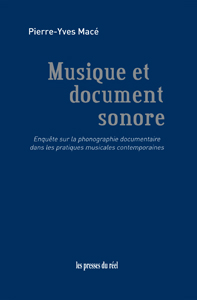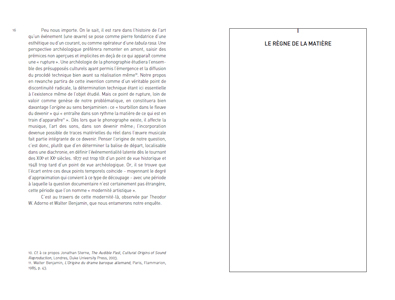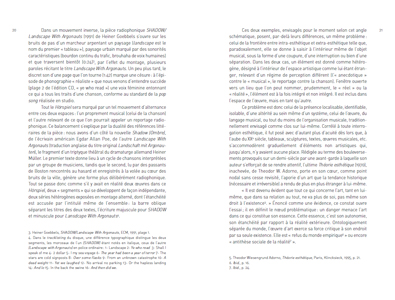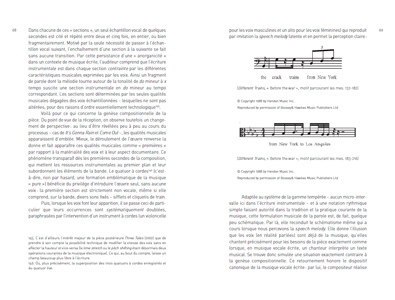An investigation into the uses of “sound
document” in
music, since the beginning of phonography.
Since 1877 and Edison's phonograph, it has become possible to archive the sounds of the outside real, which hitherto could not be objectified. A recorded sound can be considered the objective trace or document of a past event : a testimony of the empirical real.
Through a bunch of examples chosen in contemporary music and sound art (Bernd Alois Zimmermann,
Luigi Nono, Steve Reich,
Luc Ferrari,
Gavin Bryars...), this essay studies the consequences of this mutation on the aesthetic field. What is here called “sound document” is the “foreign body” which appears in a musical composition as a sign refering to the real, the very moment of the sound capture. This element affects the musical composition in its supposedly inalienable autonomy, yet at the same time offers a wide range of expressions for a variety of practices which were hitherto unfamiliar to the musical field.
Pierre-Yves Macé (born 1980) is a composer and musicologist. His music stands at the nexus of contemporary classical, electroacoustic composition, sound and and radio art. It has been performed by Ictus and Ensemble Intercontemporain among others and published by labels such as
John Zorn's Tzadik,
Sub Rosa and Brocoli. He regularly writes scores for dance and theater shows, collaborating with directors Joris Lacoste, Sylvain Creuzevault, choreographers
Emmanuelle Huynh and Fabrice Ramalingom.






